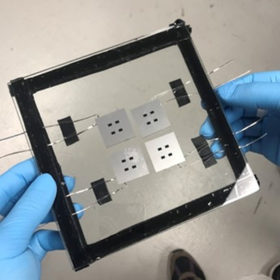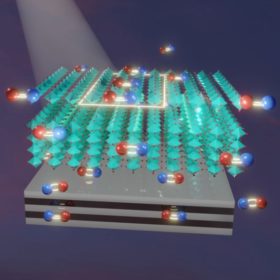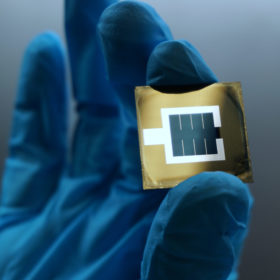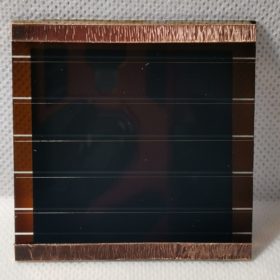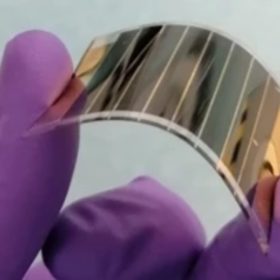Inverted perovskite solar cell achieves 23.9% efficiency, high durability
A US-Canadian group of scientists has used Lewis base molecules to improve surface passivation in a perovskite solar cell. The team produced a device with a high open-circuit voltage and remarkable stability levels.
Perovskite-CIGS tandem solar cell design promises 29.7% efficiency
A numerical study by researchers at India’s Chitkara University shows enhanced performance in the top device of a tandem solar cell based on copper indium gallium selenide (CIGS). The design had a higher open-circuit voltage, with the top cell acting as a current-limiting cell.
US scientists improve photoresponsivity in solar perovskite by 250%
Researchers led by the University of Rochester claim to have increased the photoresponsivity of a lead-halide perovskite for solar cell applications by 250%. They created a perovskite film with a plasmonic substrate made of hyperbolic metamaterial and characterized it with transition dipole orientation.
Researchers achieved world record 32.5% efficiency for a perovskite tandem solar cell
A group of researchers from Helmholtz-Zentrum Berlin (HZB) has achieved a new world efficiency record for a silicon-perovskite tandem solar cell, with a certified efficiency of 32.5%.
GreatCell achieves 32% efficiency for inorganic perovskite solar cell
Australian manufacturer GreatCell has built a cell with roll-to-roll coating technology. It designed it without a hole transport layer (HTL) and used carbon composite back contacts, which offer excellent electrical conductivity.
Reliance New Energy to invest in perovskite solar startup Caelux
The new energy arm of Reliance Industries has signed the agreement to acquire a 20% stake in California-based perovskite solar startup Caelux for $12 million. The investment will accelerate Caelux’ product development and commercialization.
Solar perovskite tandems and potential-induced degradation
Scientists have found that perovskite solar cells and perovskite-silicon tandems might be vulnerable to potential-induced degradation. They exposed tandem cell devices to PID stress and found that they lost as much as 50% of their initial performance after just one day.
The economics of perovskite solar manufacturing
Scientists in Switzerland put together a detailed analysis of the projected costs of designing and operating a 100 MW perovskite solar cell production line in various locations, taking in labor and energy costs as well as all materials and processing. The found that perovskite PV could be cost-competitive with other technologies even at much smaller scale, but noted that this still depends on the tech proving its long-term stability, and impressive achievements in research being successfully transferred to commercial production.
Perovskite: The disruptive element
Perovskite solar cells have the potential to produce more energy at significantly lower costs than conventional silicon PV cells. Efforts are underway to speed up their commercialization by addressing issues such as limited stability.
CEA-INES develops 18.95%-efficient flexible perovskite solar panels
French researchers have developed PV modules with an area of 11.6 square centimeters for indoor applications. They said the achieved efficiency level marks a world record for a flexible perovskite device larger than 10 square centimeters.
